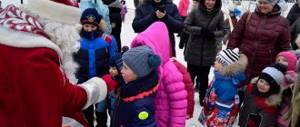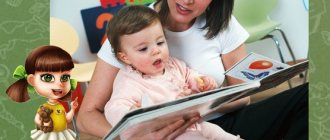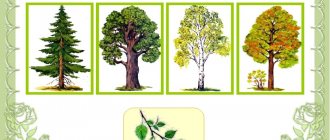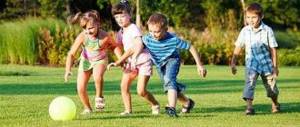Health-saving technology “Prevention of flat feet in preschoolers”, possibilities for use in physical education classes, game exercises for children 3-7 years old, card file of exercises for the prevention of flat feet in preschoolers Game exercises for the prevention of flat feet in preschoolers Use of non-standard equipment for the prevention of flat feet Card file of exercises for the prevention of flat feet in preschoolers preschoolers Consultation for parents - Say “No!” flat feet
Relevance of the problem
Currently, the problem of prevention and correction of deviations in the health of preschool children has acquired particular relevance. This is due to the variety of childhood diseases.
One of the common diseases of our time is flat feet.
Flat feet is a foot deformity caused by a decrease in the height of the arch. In preschool age, the foot is in a stage of intensive development; its formation is not yet complete, so any unfavorable external influences can lead to the occurrence of certain functional deviations. The foot is the support and foundation of the body. Violation of this foundation necessarily affects the formation of the growing organism. Changing the shape of the foot not only causes a decrease in its functionality, but also, what is especially important, changes the position of the pelvis and spine - this negatively affects the posture and general condition of the child. Insufficient development of the muscles and ligaments of the feet does not have a favorable effect on the development of many movements; in children it leads to a decrease in motor activity and can become a serious obstacle to playing many sports. Thus, strengthening the musculoskeletal system and the foot in particular is of great importance.
Prevention of flat feet in physical education classes in preschool educational institutions
Goal: To promote in children the habit of caring for their own health. Objectives: Strengthening the musculoskeletal system with special movements.
To prevent children's flat feet in the water part of the lesson, corrective walking on the toes, heels, outer sides of the feet, and walking along massage paths are used. In the main part of the physical education class, to increase the effectiveness of flatfoot prevention, special exercises accompanied by short rhymes are included in the complexes of general developmental exercises.
Consultation for teachers “Prevention of flat feet in preschool children”
Practical material on the prevention of flat feet in the process of educational activities in physical education in a preschool institution
Flat feet is a disease of the musculoskeletal system, which manifests itself in a decrease in the height of the arches of the feet and some deviation of the foot outward. The foot bears a large load when standing, walking, jumping and ensures the movement of our body in space. The condition of the foot determines the smoothness, ease of walking and energy efficiency.
When the normal relationships between bones, muscles, and ligaments are disrupted, the function of the foot is disrupted, which leads to changes in various body systems.
For more effective training of the muscles and ligaments of the feet, game tasks should be performed without shoes.
Game exercises for legs
| Walk the line | Draw a straight line on the floor with chalk and invite the child to walk along it several times. |
| Crane in the swamp | The child walks, stopping and raising his leg high, strongly bent at the knee. |
| Skater | Stand with your feet apart, hands behind your back. Bend either the right or left leg, tilting the body with a half turn to the sides, imitating the movements of a speed skater. |
| Clapping under the knee | Main stand. Quickly raise your straight leg forward and slam underneath it. Repeat with each leg in turn. |
| Sit by the wall | Stand against the wall, touching it with your heels, buttocks, shoulder blades and the back of your head, hands down. Squat on your toes, then stand without leaving the wall. Repeat slowly several times. |
| Step over your hands | Basic stance, hands down and clasped. Leaning forward slightly, step over your hands. Repeat at an average pace several times with each leg. |
| Skier | Walk with long strides, bending the leg in front (lunging) and alternately raising your arms forward, imitating the movements of a skier. |
| Sit down in a lump | Narrow stand. Squat down on your entire foot and, leaning forward strongly, clasp your shins with your hands and lower your head. |
| Sit-stand | Narrow stand. Slowly sit down and stand up, helping yourself with your hands. |
| Sit cross-legged | Stand with legs crossed. Slowly sit cross-legged on the floor and stand up, trying not to help yourself with your hands. The weight of the body should be evenly distributed on both legs, on the outer edges of the feet. |
| Duck walk | Walking in a squat, hands on knees. |
| horse | The child runs around, pretending to be a horse. |
| Bounce like a ball | Main stand. Jump on your toes, moving in small jumps. |
| Jump on one leg | Jump in small steps, first on one leg, then on the other. |
| Dance | Stand, hands on waist. Alternately place your feet forward on your toes and then on your heels. |
Exercises with a medium size ball
| Lift the ball with your feet | Sitting on your forearms. Grab the ball with your feet and lift it higher. |
| Pass the ball with your feet | Sitting on your forearms. Grasping the ball with your feet, lift it and move it closer to you, turning your knees to the sides. |
| Kick the ball with your feet | Sitting on your forearms. Grab the ball with your feet, lift it and try to throw it over your head. |
| Roll the ball | Sitting on your forearms, place your feet on the ball. Bend your legs and move your feet, roll the ball towards you, and then roll it away from you. |
| Football | Dribble the ball with your feet. |
Exercises with a small gymnastic stick
| Step over the stick | Narrow stand, stick at the bottom, hold by the ends. Raising your legs high, step over the stick forward and back. Repeat several times without letting go of the stick. |
| Step over while sitting | While sitting, hold the stick by the ends. Move your legs over the stick one at a time and then return them back. |
| Lift the stick with your feet | Sitting on your forearms, legs on your feet, the stick lies on top of one foot and is supported by the bottom of the other foot. Try to lift the stick. |
| Cross your legs over the stick | Lying on your back, stick in front of you. Strongly bending your legs, try to move them over the stick and return to the i. P. |
| Walk the stick | Walk on a stick as if on a tightrope. |
| Walk sideways on the stick | Walking on a stick with an extended step. |
Exercises on the stairs
"Take the stairs"
(Fig. 4.1)
Place the ladder on the floor and invite your child to walk along it, stepping from one step to the next.
"Keep your balance"
(Fig. 4.2).
The child walks along the side rungs of the stairs, trying to maintain balance.
Walking on all fours
(Fig. 4.3).
Walk along the stairs lying on the floor on all fours: with your feet on the side rungs, and with your hands along the steps.
“Go up” (Fig.
4.4).
Place the ladder at an angle, slightly lifting one end of it above the floor and securing it. Invite your child to walk up the stairs, supporting him by the hand.
Rice. 4.1 Fig. 4.2 Fig. 4.3 Fig. 4.4
Exercises on the gymnastic wall
Climbing.
The child climbs up and down the steps of the wall bars.
Walking sideways.
The child moves along the bottom step with an extra step in one direction, then along the next step in the other.
Squat.
Stand on the bottom step, holding yourself at waist level (Fig. 3.61), and do several squats.
- Outdoor games.
Don't underestimate the importance of play in raising a child. The more often adults play with
children, the better and faster the children develop the necessary skills.
The fact is that children in independent games cannot immediately show themselves, their activity and initiative; their
are often monotonous
and
limited. However, in games with a task, their actions become purposeful: by repeating movements several times, the child consolidates motor skills, develops mobility and dexterity. You can invent games yourself or modify and, if necessary, complicate existing ones. Children need to be taught to play, no matter how strange it may seem. Then they will not only be stronger and healthier, but also more organized and proactive. Play for children is the main form of learning.
Outdoor games to prevent flat feet
"Nimble Legs"
Children sit on the floor, supporting themselves with their hands behind them, legs extended forward, and a ball between their feet. Having clasped the ball with their feet, they shift the ball to the side, passing it to the next one.
If children sit in a circle, then pass the ball around the circle. You can play in teams. The team that passes the ball faster wins.
"Drum".
Children sit on chairs (bench). An adult sits opposite and beats the beat in a certain rhythm, alternately with the toe of one foot, the other, and the toes of both feet at the same time. Children repeat after him, their heels remain firmly pressed to the floor.
The game is repeated, only the beat is beaten with the heels, and at this time the toes are pressed tightly to the floor.
“Who can hide the sheet faster?”
(Fig. 5.1)
Children sit on chairs (bench).
Each child should have their own sheet 50-60 cm long. At a signal from an adult, children begin to collect the sheet with their toes. The one who quickly picks it up under his feet wins.
"Bring me the handkerchief"
(Fig. 5.2).
Children sit on chairs (bench). Each child has a handkerchief under his feet.
You need to grab the handkerchief with the toes of one foot and, without ever dropping it, carry it in any way (jumping on one leg, on all fours) to the opposite end of the hall.
Repeat the same with the other leg. The one who carries the handkerchief the fastest without dropping it wins.
"The Giant and the Dwarf."
“Giants” walk, rising on their toes as high as possible. “Dwarfs” move by squatting.
"Horse".
Children move in a circle, imitating the pace of a horse, at different paces: walking, trotting, galloping.
"Pass - don't make a mistake"
(Fig. 5.3).
Children walk along the line marked with chalk on the floor, placing the heel to the toe of the foot in front. Then they walk back, back forward, putting their toes to their heels.
"Footballers."
Two children stand opposite each other at a distance of 20 steps. Behind each person, at a distance of 1 m, a “gate” 1.5 m wide is installed.
One of the players must throw the ball, dribbling it with either his right or left foot, into the opponent’s goal. If there are many players, then you can play with several teams.
"Frisky bag"
(Fig. 5.4.).
The players stand in a circle. The driver stands in the middle. He spins a rope with a knot at the end (a bag filled with sand).
Children watch the bag and, when it approaches, try to jump over the rope.
Rice. 5.1 Fig.5.2 Fig. 5.3 Fig. 5.4
LITERATURE
- City Center for Education and Health "MAGISTER". Ensuring a health-saving process in a preschool educational institution: Collection of educational programs / Comp. O.I. Cheremisina, M.V. Malysheva, N.A. Sklyanova and others - Novosibirsk: Publishing House NIPK and PRO, 2001. - P. 55.
- Gor'kova L.G., Obukhova L.A. Physical education classes in preschool educational institutions: Main types, lesson scenarios. – M.: 5 for knowledge, 2005. – P.61, 81-83.
- Krasikova I.S. Children's massage. Massage and gymnastics for children from three to seven years old. – St. Petersburg: CORONA: Teacher and student, 2003. – P. 192-197, 201-205, 289-291, 294-298.
- Rehabilitation of children with pathology of the musculoskeletal system in a preschool educational institution Comp. O.I. Cheremisina, N.A. Sklyanova, N.A. Leitan, I.N. Grebennikova. Novosibirsk, State Center for Public Education “Magister”, 2004. – pp. 34-38.
Game exercises for the prevention of flat feet in preschoolers
"Swing"
Equipment: gymnastic bench
On the swing, on the swing Fly straight into the sky Up and down, up and down Hold on tight!
I.p. – sitting on the edge of a bench, straight legs extended forward, heels on the floor. 1 – pull your socks towards you (“up”); 2 – pull your socks towards the floor (“down”).
"Clap"
Equipment: gymnastic bench (included in a set of general developmental exercises on the bench)
Hands used to clap, but now legs clap.
I.p. – sitting on the edge of a bench, straight legs extended forward, heels on the floor. keep your feet together. 1- spread your socks to the sides, heels together; 2 – socks together, connect the joints of the thumbs together (“patted”).
"Ballet"
Equipment: gymnastic bench
Legs dance like in ballet Our children can show their legs on their toes
I.p. – sitting on a bench with your back straight, arms resting on the bench from the sides, legs straight outstretched forward. 1-2 – pull your legs towards you, keep your feet in a vertical position, resting on your toes. 3-4 – return to the starting position, pull your socks towards you.
"Spider"
Equipment: hoop, gymnastic stick, or pole.
A spider crawls along the path, quickly rearranges its legs
step over the hoop (gymnastic stick, rope) with an extended step on the right and left side, the heel is placed on the floor, the toes clasp the hoop (gymnastic stick, pole).
"Cheerful hedgehog"
Equipment: small ball, ball.
The hedgehog ran along the path. We massaged I.p.’s legs. standing, hands on your belt, roll the ball with your foot from toe to heel, first with your right foot, then with your left.
"Artist"
Equipment: not required
Today we will draw We will only use our legs The legs will begin to fulfill the artist’s intention
I.p. standing, hands on the belt, children “draw” shapes on the floor with the fingers of one foot: a circle, square, snake, etc., the same with the other foot.
"Snail"
Equipment: not required
How the snail walked along the path The legs will help us show
I.p. – standing, hands on your belt, entire foot on the floor. Lift your toes off the floor, then curl your toes, resting them on the floor, thus pulling your foot forward. Continue moving forward with both feet at the same time.
"Crayfish"
Equipment: not required
How crayfish move backwards It’s not difficult for us to show
I.p. – standing, hands on your belt, entire foot on the floor. Raise your toes off the floor, then curl your toes, resting them on the floor, push off with your curled toes and move back.
"Sticks"
Equipment: wooden sticks (1 for two)
We stand, do not lose heart, roll sticks to each other
I.p. – standing, hands on the belt. Rolling the stick to each other with your right foot. Same with the left foot.
"Ice rink"
Equipment: gymnastic stick
This is the kind of skating rink we have For building roads To smooth out wrinkles There’s no better machine to be found
I.p. standing, hands on the belt, one leg stands on a gymnastic stick, stick in the middle of the foot: roll the stick back and forth, the same with the other leg
"Heels"
Equipment: not required
We don't luxuriate in the crib. We stretch our heels together.
I.p. standing, hands on your belt, or holding hands facing each other, stand on your heels, point your toes towards you, lower yourself onto your entire foot.
"Caterpillar"
Equipment: not required
Caterpillar, caterpillar In a golden coat, Go, caterpillar, Under a shady leaf. V. Lunin
I.p. – standing, hands on your belt, entire foot on the floor. Lift your toes off the floor, then curl your toes, resting them on the floor, thus pulling your foot forward. Continue moving forward with both feet at the same time.
"Drummer"
Equipment: gymnastic bench
I have a drum, It thunders like a hurricane! But when they gave it as a gift, they asked to beat it quietly. Why have it, If they ask you not to make noise?! N. Hilton
I.p. sitting on a gymnastic bench, feet on the floor, parallel to each other, fingers tucked, beat out the proposed rhythm with your toes simultaneously with both feet or alternately.
"Window"
Equipment: gymnastic bench
I'm looking out the open window, I'll look out onto the street, but I'll close the window if the sky is frowning.
I.p. sitting on a gymnastic bench, legs stand together, resting on toes, 1-2 - holding legs together, spread calves “window open”, return to standing position. "the window is closed"
"Mill"
Millstones are grinding grains Early in the morning There will be a lush loaf, Delicious bagels.
Equipment: not required
I.p. sitting, legs extended forward, emphasis on heels: 1-2 put your feet on the floor to the left, 3-4 return to the IP, put your feet on the floor to the right (can be done in different directions)
"Painter"
It's time to paint the room. We invited a painter. But not with a brush and a bucket. Our painter comes to the house.
Equipment: not required
I.p. lying on your back, walk one foot over the other
"Ship"
I made a boat and launched it on the water. You sail, my little boat, and then return home! R. Bikmetova
Equipment: gymnastic bench
I.p. sitting on a gymnastic bench, put your feet together, emphasis on your toes
Traditional exercises to prevent flat feet
Such prevention exercises are suitable not only for children, but also for adults. Many of them are as simple as possible and can be interesting for preschool children.
Lying on your back :
- Preschool children bend and straighten their feet with the greatest possible amplitude, holding them for several seconds in the extreme position.
- Children “twist” bicycle pedals in the air, placing special emphasis on the correct movement of their feet.
- The toes clench and unclench, forming a fan.
- The feet of the straight legs grasp the ball and place it behind the head. Then he returns back.
While sitting on a chair :
- Move from straight feet to toes and back.
- Collect scattered objects of different sizes with your toes.
In a standing :
- Children walk one after another, now on their heels, now on their toes, now on the inside of the foot, now on the outside.
- Walking on your toes, but not standing, but in a half-squat.
- Walking on a gymnastic stick. For preschool children in the younger group, you can use hoops: the feet are placed across or each leg takes turns rolling this hoop.
Classes are usually held using special equipment. Ribbed tracks, small inflatable balls, ropes, hoops, sheets, hemispheres.
Use of non-standard equipment for the prevention of flat feet
DIY equipment for the prevention of flat feet. Photo1
It’s not at all difficult to make equipment for the prevention of flat feet with your own hands. A little imagination and the “Boa constrictor” with sewn buttons and beads not only teaches children balance and snake walking, but also perfectly massages the feet.
DIY equipment for the prevention of flat feet. Photo2
A snake is a household rope with a diameter of 1 cm sewn onto a rug; it looks quite aesthetically pleasing; it’s good that such ropes are sold in different colors. And these magical “Traces” allow you to perform a contrast massage.
DIY equipment for the prevention of flat feet. Photo3
“Squares” create different tactile sensations. On the squares you can sew any available material: sticks, ropes, old mosaics, bodies from used pens, foam sponges and everything, everything, everything that you can step on without harm to your health.
see also
Children's physical exercises - health-saving technologies Children's self-massage - health-saving technologies Relaxation during physical education classes - health-saving technologies
Card file of exercises for the prevention of flat feet in preschoolers
“Rink” card index of exercises for the prevention of flat feet
“Heels” card index of exercises for the prevention of flat feet
“Caterpillar” card index of exercises for the prevention of flat feet
“Drummer” card index of exercises for the prevention of flat feet
“Window” card index of exercises for the prevention of flat feet
“Mill” card index of exercises for the prevention of flat feet
“Painter” card index of exercises for the prevention of flat feet
“Sickle” card index of exercises for the prevention of flat feet
"Ship" card index of exercises for the prevention of flat feet
“Collector” card index of exercises for the prevention of flat feet
“Robber” card index of exercises for the prevention of flat feet
Consultation for parents
Say "No!" flat feet
“Flat feet are not scary, you don’t die from it” - this is how people who “don’t care about it” sometimes motivate people to ignore the symptoms of this disease. However, when back pain, headaches, pain in the hip and knee joints become unbearable, it is often too late to treat flat feet: this disease remains with the patient for life. Therefore, it is always better to prevent its development, especially since preventing flat feet will not take you and your family either time or money. To prevent this disorder, it is important to pay attention to the development of correct gait (straight feet when walking, toes not pointed to the sides). If your work involves standing in one place for a long time, three or four times a day you should rest for thirty to forty seconds, placing your feet parallel and standing on their outer edges. Warm water baths at the end of the working day are also useful to prevent flat feet. Then you can massage your feet if you have flat feet or are prone to it - this relieves pain in the legs, restores blood circulation and is generally a wonderful way to prevent and treat this disease. During massage, special attention should be paid to the sole of the foot; also, with smooth, strong movements - stroking, rubbing, kneading, tapping - you need to massage the shins from the front and inside. Ten minutes of such a massage after a warm bath every day or at least every other day - and flat feet and pain in the legs will not make themselves felt until old age. Also, methods of preventing flat feet include therapeutic exercises, some exercises from the cycle of which can be performed during rest. Among them are walking barefoot on uneven surfaces of natural origin (sand, pebbles, earth), walking on tiptoes and on heels, live games (basketball, volleyball, etc.), it is very useful to walk barefoot in the dew (if you have such an opportunity - for example, on holiday in the village). Properly selected shoes are the key to maintaining the most correct shape of the foot and ensuring that it performs its spring functions in full force. The right choice of shoes, which should fit your feet, not be too narrow or tight, and have a heel of 3-4 cm, is also the key to maintaining healthy legs and feet. In particular, orthopedic insoles or arch supports are not only a method of treating flat feet, but also a great way to avoid it. Flat feet in some cases are a consequence of previous diseases of the musculoskeletal system or foot injuries. If you are at risk for this disease, you should pay special attention to exercises to prevent the development of this disease.
Bibliography:
I.A. Fomina “Physical training and sports games in kindergarten” Moscow, “Enlightenment” 1984 S.S. Volkova “How to raise a healthy child Kyiv, Radyanska School” 1981 L.F. Ostrovskaya “Let the child grow up healthy!” Moscow, “Enlightenment” 1979 Yu.F. Luuri “Physical education of preschool children” Moscow, “Enlightenment” 1991 A.V. Keneman, D.V. Khukhlaeva “Theory and methodology of physical education of preschool children” Moscow, “Enlightenment” 1978 O.N. Morgunova “Physical and recreational work in preschool educational institutions” Voronezh 2007 E.Ya. Stepanenkova “Physical education in kindergarten” Program and methodological recommendations. For classes with children 2-7 years old. ed. Mosaic-Synthesis Moscow 2008 M.D. Makhaneva “Raising a Healthy Child” Arkti Publishing House Moscow, 1997 T.A. Tarasova “Monitoring the physical condition of preschool children” Creative Center. Moscow 2005
Prevention of flat feet in preschool children - exercises in a playful way
Game exercises for the prevention of flat feet can be carried out either in the morning during gymnastics, or in free time with a teacher, or during regular physical education, or during awakening exercises after sleep, or during physical therapy. As a result, the muscles of the arch of the feet are strengthened and their tone increases.
| A game | Description |
| "Show me the ball" | The caps of plastic bottles and a sheet of cardboard on which balls are depicted are used. The child’s task is to pick up these covers with his toes and place them on the drawn balls. The legs alternate. |
| "Growing Together" | Children rise on their toes, count to 3 and lower themselves. |
| "Own figure" | Caps from plastic bottles and various geometric shapes from any material are taken. The figures lie on the floor. The children’s task: take the covers with the toes of their left and right feet and lay out the figures in front of them, as if “painting over” them. Then you can exchange figures. |
| "Building a tower" | Take cubes of such a size that children can hold them with their toes. The guys take one cube at a time and try to carefully stack them on top of each other, building a tower. |
| "Gathering the Harvest" | Plastic and soft toys in the shape of various fruits are scattered on the floor: peas, onions, mushrooms, nuts, seeds, etc. Each pupil has his own basket (these can be ordinary boxes). Next, the children are given the command to start harvesting. When there is nothing left on the floor, you can count the results and identify the winner (if the group is already older). |
| "We draw with our feet" | Each child is given a piece of paper and a felt-tip pen. The markers are held between the thumb and index finger and creativity begins. You can draw geometric shapes, bows, suns, flowers. This exercise will not only prevent flat feet in preschool children, the exercises of which are more likely aimed at the muscles of the feet, but also creative development. |
| "Pencil Drawings" | Children are asked to pick up pencils with their feet and lay out some given drawings or shapes from them. |
| "Relay race" | The guys are divided into 2 teams. Two identical objects are selected, which will be passed with their feet from one preschooler to another. Whichever team manages to be the first to transfer an object (ball, stick, cube or something else) from the first participant to the last, wins. |
If you regularly do exercises and play games with your children that are useful for developing the muscles of the feet, then in the future there will be no need to consult doctors about flat feet. You can download another large selection of games and exercises here.




